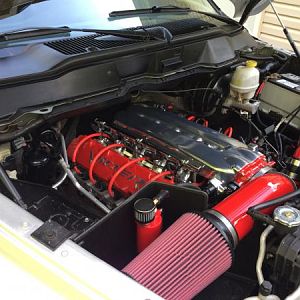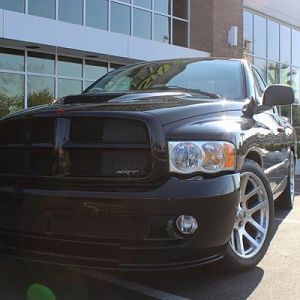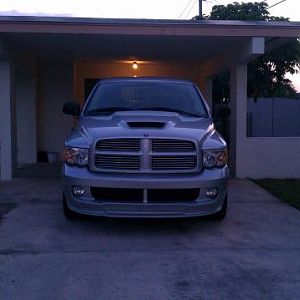From:WEST MARINE
Selecting a Marine Storage Battery
--------------------------------------------------------------------------------
Types of batteries
Batteries on your boat handle two basic kinds of tasks, starting an engine and running electrical loads like lights, electronics and accessories for longer time periods. To choose a battery, first determine the battery’s application and then choose from one of the three battery chemistries: Flooded, Gel or AGM.
Starting Batteries: Starting batteries, which crank the starter of your boat’s engine, are the sprinters of your electrical system. They deliver between 75 and 400 amperes for 5-15 seconds, and then are recharged in short order by your engine’s alternator. Like all lead-acid batteries, they are constructed with alternating layers of negative and positive plates with insulation between them. Starting batteries have thinner and more numerous plates, providing extra surface area to generate high amperage bursts of current. The two drawbacks of this construction are that the plates are relatively fragile in high-impact environments, and that starting batteries do not tolerate deep discharges, which reduce their operating lifespan.
Deep Cycle Batteries: Your boat’s House battery bank uses Deep Cycle batteries, the marathon runners of the storage system. They power the electrical loads on your boat when no charge source (shore power charger, engine alternator, wind generator or solar panel) is available. Consider them a kind of savings account into which energy is deposited or withdrawn.
Compared to starting batteries, which deliver high bursts of energy for short periods, deep cycle batteries recover fully after being heavily discharged over longer periods because their design features thicker plates with a high content of antimony. Overnight, their use might deplete 50-70% of the battery capacity, depending on the house loads of the boat. When the batteries are recharged, energy is re-deposited into the bank, and the process, or cycle, starts over.
Dual-Purpose Batteries: We generally advise that you choose either a deep cycle or starting battery for best performance and battery life, but dual-purpose batteries work well in some applications. With large thick plates containing more antimony than starting batteries and an active lead paste chemistry, dual-purpose batteries are a good compromise, tolerating deep discharges that would ruin a typical starting battery. Since they have lower storage capacity than comparably sized deep cycles, we recommend them for the following applications:
Runabouts or other small powerboats using a single battery for both starting and running loads with the engine turned off.
Sailboats with two identical batteries used interchangeably for starting and house electrical loads
Boats with one battery bank that does double duty for house applications and engine starting. Dual-purpose batteries will last longer and give more reliable service than a starting battery, for about $20 more per battery.
What to look for
Starting functions: The amount of power available for cranking a starter is measured several ways:
CCA vs. MCA:The two common power measurements are CCA (Cold Cranking Amps, the number of amps a battery can deliver for 30 seconds at 0°F while maintaining its voltage above 7.2 volts) and MCA (Marine Cranking Amps, similar but measured at 32°F instead of 0°F). The reason that MCA are 20-25% higher than the CCA is because batteries work better at higher temperatures.
Reserve Minutes indicate how long a battery can sustain a load of 25 amps before it drops to 10.5 volts. A battery rated at 150 minutes can operate a 25A load for 2 1/2 hours. Starting batteries aren’t used to handle loads for long periods, so reserve minutes are less critical.
Size: Engine size, type, and ambient temperature determine what size cranking battery you need. High cranking power (and a larger battery) is required for cold temperatures, diesel engines, or large and high compression gas engines. If a Group 24, 550 CCA battery worked well for five years, we’d recommend replacing it with a similar model. If, however, it cranked too slowly, or failed after a season or two, we’d suggest that you look for a battery with a higher CCA or MCA rating.
Deep Cycle Functions
Battery Capacity measurements are commonly expressed in Amp-hours (Ah) and Reserve Minutes. Amp-hours measure the total amount of energy that a battery can deliver for 20 hours at a constant rate of discharge, before the voltage drops to 10.5 volts. This means that a 200Ah battery can run a 10A load for 20 hours. The reserve minute rating is the number of minutes that a battery can run a 25A load until dropping to 10.5V, just like with starting batteries. A Group 27 deep cycle battery with a rating of 180 reserve minutes will run a 25A load for three hours. House loads range from 5A to 25A or more. Ah is generally the more relevant measurement for house banks.
Longevity
Battery manufacturers measure longevity by discharging full batteries until their voltage drops to 10.5 volts. The batteries are recharged under controlled conditions, and the process is repeated until the battery fails to hold half of its rated capacity. This measurement, called cycle life, shows how many discharge cycles a battery provides over its lifespan. This ability to cycle repeatedly is what differentiates deep cycle batteries from starting batteries, which can’t withstand more than a few deep discharges before they begin to fail. If nothing else, cycle life provides a baseline for comparing one battery to another.
Choose the right battery chemistry
Marine batteries are available in three chemical types: flooded, Gel and AGM (Absorbed Glass Mat). Which type you choose is based on your needs (deep cycle vs. starting), the capacity and lifespan you are looking for, and your budget.
Flooded batteries,unlike other types, use a reservoir of liquid sulfuric acid to act as a pathway between positive and negative plates, which produce hydrogen and oxygen when the battery is being charged. Vented wet cell batteries allow the gases to escape into the atmosphere, unlike gel and AGM batteries, which recombine the gases and re-introduce them to the system. Vented hydrogen is an explosive gas, so battery boxes and compartments must be vented to let the gas escape safely outside the boat. Flooded deep-cycle batteries require maintenance-periodic inspection and topping-off with distilled water.
Flooded batteries handle overcharging better than gel and AGM batteries, because of this hydrogen venting and because they are not sealed like the other types. They self-discharge at a higher rate (6 to 7% per month) and thus require off-season charging. Wet cells must be installed in an upright position and do not tolerate high amounts of vibration. Their initial cost is lower than similarly sized AGM or gel batteries. Properly charged and maintained, our premium wet cell deep-cycle batteries are capable of between a few hundred and over a thousand discharge cycles, which can translate to many years of dependable service.
Gel Batteries: The SVR design nearly eliminates gassing, so they are safer to install around people and sensitive electronics (but gel and AGM batteries still need to be vented). Gel batteries are manufactured to very high standards of quality and consistency, since it is not possible to add water or gain access to the interior. The "gel" is a combination of sulfuric acid, fumed silica, pure water and phosphoric acid. After mixing during manufacturing to a thin liquid form, it is sucked into each cell by vacuum pressure up to six times, eliminating voids and air pockets on the plates that would cause dead spots and reduce performance. Once it is in place, the gel becomes quite viscous, which prevents leaks if the battery is inverted or the case is damaged.
Charging causes a small amount of hydrogen and oxygen to be generated at the plates, like a flooded battery, but the pressure inside the cells combines the gasses to create water (so they are called "recombinant" batteries). This keeps the battery from drying out due to charging, but it also requires that the vessel’s charging system be very carefully regulated to prevent high voltage over-charging.
AGM batteries: Sealed Valve-Regulated AGM (Absorbed Glass Mat) batteries feature fine, highly porous microfiber glass separators compressed tightly between the battery’s positive and negative plates, which are saturated with just enough acid electrolyte to activate the battery. During charging, precision pressure valves allow oxygen produced on the positive plate to migrate to the negative plate and recombine with the hydrogen, producing water. In addition to providing equal saturation across the entire surface of the battery’s positive and negative plates, the fibers in the dense glass mats embed themselves into the plates’ surface like reinforcing rods in concrete, providing more plate support and better shock and vibration protection than in conventional batteries.
High-density AGM batteries have lower internal resistance, allowing greater starting power and charge acceptance, and quicker recharging than other types of deep cycle batteries. High acceptance means that AGM batteries can accept the highest charging current, up to 40% of the amp hour capacity of the battery, compared to about 25% for the other two battery chemistries. Long life, a low 3% self-discharge rate and outstanding performance make AGM batteries excellent dual-purpose batteries for boaters who require quick starting power and reliable deep cycle ability.
Battery tips for best performance
No matter what kind of battery chemistry you choose, follow these recommendations to get the best performance:
Stay with one battery chemistry (flooded, gel, or AGM.) Each battery type requires specific charging voltages. Mixing battery types can result in under- or over-charging. This may mean replacing all batteries on board at the same time.
Never mix old batteries with new ones in the same bank. While it seems like this would increase your overall capacity, old batteries tend to pull down the new ones to their deteriorated level.
Regulate charge voltages based on battery temperature and acceptance (manually or with sensing) to maximize battery life and reduce charge time. Ensure that your charging system is capable of delivering sufficient amperage to charge battery banks efficiently. This generally means an alternator with 25% to 40% as many amperes as the capacity of your entire battery bank.
Keep batteries clean, cool and dry.
Check terminal connectors regularly to avoid loss of conductivity.
Add distilled water to flooded lead acid batteries when needed. Keep them charged. Leaving them in a discharged state for any length of time will damage them and lower their capacity.
Clean corrosion with a paste of baking soda and water.
Smart Battery Charging
--------------------------------------------------------------------------------
What do batteries want?
Battery power is a baffling topic to most boaters, but is also critical for starting engines and running lights and accessories. If you don’t happen to have an abundance of "smarts" when it comes to managing your charging needs, it helps to have a system with the "smarts" built-in. Fortunately, modern "smart" charging options are available to make proper care of batteries almost idiot-proof.
Marine deep-cycle batteries last the longest and charge the fastest if they are charged in distinct phases, which we refer to as the "Ideal Charge Curve", the charging schedule recommended by virtually all makers of marine batteries. In the description that follows, remember that recommending precise voltages for batteries is subject to at least two caveats:
Gel batteries charge at different (and lower) voltages than flooded-type and AGM batteries
The voltages stated are temperature-dependent
This makes it difficult to recommend precise charging voltages, since they vary according to the temperature of the battery. Most of us generally operate our boats in temperatures between 50°F and 90°F, and the values used in our West Advisors reflect that. Higher temperatures require lower voltages, and lower temperatures require higher voltages. Note: In the following section, we define the capacity of the battery bank (in amp-hours) as C.
The "Ideal Charge Curve"
Bulk Phase: This is where the heavy lifting takes place. Charge at a rate up to 20%-40% of C to a voltage of about 14.4 volts (gel: 14.1V). For example, a 200 amp-hour battery would be charged at 40-80 amperes. This will bring the battery to about 75% of full charge, and is efficient (more amp-hours per hour of charge time) since the battery accepts more current when it is discharged. AGMs require slightly different voltages, and unless there is an AGM setting, should be charged using lead-acid settings.
Acceptance Phase: Maintain battery at 14.4 volts (Gel: 14.1V) while the amperage is steadily reduced. This will restore the next 25% of capacity at a declining rate. Your battery can be considered fully charged if it will accept current equal to 2% of C at 14.4 volts (a 200 amp-hour battery will only accept 4 amps).
Float Phase: When the battery’s acceptance declines to 2-4% of C, the voltage is reduced to 13.3 volts (Gel: 13.1V) to maintain the battery without losing electrolyte from the cells. This is a maintenance phase, not a charging phase.
Equalization: This stage is used to prevent flooded lead acid batteries from aging prematurely, and is an optional, but frequently omitted phase. After the battery reaches the end of the acceptance phase, the battery continues to be charged at 4% of C until the voltage stops rising, usually around 15.5-16.2 volts. This forces the battery to its highest possible state of charge, boiling the electrolyte in a controlled manner and dissolving the crystals of lead sulfate that have collected on the battery’s plates. In industrial applications where maximum energy storage is important, this phase is done every charge cycle. In the marine environment, it is more likely to be done every 20-50 cycles to extend the life and capacity of wet batteries. Gel and AGM batteries should not be equalized. Since electrical equipment and light bulbs can be damaged by high voltage, the battery should be disconnected from all loads during equalization.
This type of battery charging, consisting of multiple stages, is not possible with automotive-type alternator regulators, unregulated solar panels, ferroresonant chargers, or taffrail generators. We strongly encourage the use of efficient charge devices, both for shorepower charging and alternator regulation, that use modern multiple-step regulation.
What size of charger do I need?
Deciding how big your charger needs to be is determined by the size and type of your batteries, and whether your boat has a continuous or intermittent source of AC power to run your charger. Boats that spend most of their week at a dock, constantly hooked up to shore power, require smaller chargers. You need enough capacity to run the continuous loads on your battery system, like DC refrigeration (frequently the biggest user of battery power) and lights, plus enough power to float-charge your batteries. A good rule is to have enough amperage to equal the sum of the DC loads plus 10% of the amp-hour capacity of the batteries.
If you're cruising or anchored out, and aren't plugged in except intermittently, you will want enough capacity to recharge in the time you have available, if possible. You need enough juice to replace the power consumed by all the DC loads, as above, plus an average charge rate equaling the amp hours required divided by the hours available. Maximum amperage that batteries can accept during the Bulk Phase of the charging cycle vary depending on battery chemistry: flooded batteries can accept a charge rate of up to 25% of C; gel batteries have a higher acceptance rate of as much as 30%; AGM batteries accept the highest charging amps, as much as 40% of C.
How long does it take to charge?
If you operate your house bank between a 50% and 85% state of charge, as many experts recommend, and charge once daily, you should be able to return the 35% of battery capacity by operating a properly-sized alternator for slightly over an hour. More deeply discharged batteries, or smaller alternators, will require more time.
Surprisingly, using a massive charger or monster alternator to pour on the current can be counterproductive, and can shorten your battery life. Excessive current makes batteries heat up and gas excessively (when the electrolyte dissociates into hydrogen and oxygen). Soon the voltage limit is reached, causing a downshift from the Bulk to Acceptance Phase. Adding more battery capacity is a better solution, and may even decrease the needed recharging time. Bigger battery banks can accept more charging amps, so they replenish more quickly and you don’t need to run your engine as long.
How long does it take to charge?
If you operate your house bank between a 50% and 85% state of charge, as many experts recommend, and charge once daily, you should be able to return the 35% of battery capacity by operating a properly-sized alternator for slightly over an hour. More deeply discharged batteries, or smaller alternators, will require more time. Surprisingly, using a massive charger or monster alternator to pour on the current can be counterproductive, and can shorten your battery life. Excessive current makes batteries heat up and gas excessively (when the electrolyte dissociates into hydrogen and oxygen). Soon the voltage limit is reached, causing a downshift from the Bulk to Acceptance Phase. Adding more battery capacity is a better solution, and may even decrease the needed recharging time. Bigger battery banks can accept more charging amps, so they replenish more quickly and you don’t need to run your engine as long.
Tips for battery longevity
Shallow discharges lead to a longer battery life
80% discharge is the maximum safe discharge
Don't leave batteries deeply discharged for any length of time
Charge batteries after each period of use
Don't mix old batteries with new ones
How to kill a battery
Undercharging: consistently failing to fully recharge batteries leaves them with lead sulfate that hardens on their plates–they become sulfated–and gradually lose their ability to perform. Increased resistance when charging causes falsely elevated voltage readings, essentially fooling the battery charger, leading to further undercharging, in a downward spiral. Beyond a certain point, a sulfated battery cannot be returned to a healthy state, and you need a replacement. Keep your batteries charged, and equalize your wet cell batteries every six to eight weeks in temperate climates, and more frequently in the tropics.
Overcharging: Especially fatal to Gel and AGM batteries, consistent overcharging (NOT equalization) boils the electrolyte out of the cells, and can even lead to thermal runaway, with the battery becoming hotter and hotter. One of our writers experienced thermal runaway on his liveaboard Catalina 30, caused by a ferroresonant "dumb" charger, with nearly catastrophic results.
Excessive deep discharge: Don't completely discharge a deep cycle battery if it can be avoided. The deeper the discharge the less life you will get from the battery. The ideal method is to charge and discharge the batteries through the middle range (50% – 85%) of their capacity and, if they are flooded batteries, to equalize them periodically. Leaving the battery in a fully-discharged state, for example during winter storage, causes it to become sulfated.





